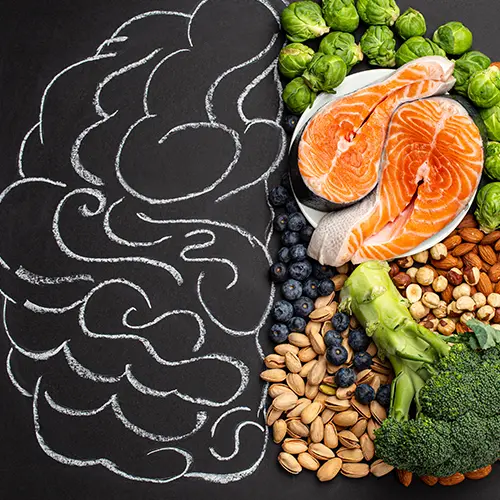Table of Contents
What Are The Most Common Diseases Related to Urology?
When visiting a hospital or health clinic, you'll encounter various medical specialties; urology is prominent. In essence, urology delves into the study and treatment of disorders within the urinary systems of both males and females.
Urology encompasses a range of conditions, such as benign prostatic hyperplasia, urinary tract infections, kidney and ureteral stones, urinary incontinence, and urological cancers. Specialists in this field undertake research and surgical procedures to address these issues.
In this article, we'll explore these urological conditions and more.
Benign Prostatic Hyperplasia (BPH)
Benign prostatic hyperplasia (BPH) is a urological condition called prostate enlargement. BPH is seen mainly among older men since age is one of the most known factors in this disease. For more information, here are the BPH signs:
- Difficulties during Urination: Urination problems are the most common signs of BPH. BPH causes discomfort during urination.
- Frequent Urination: Sudden, frequent, and incomplete urination sessions, especially at night, that make you wake up from your sleep and have difficulties are some of the most common signs of BPH. Urology surgery would be needed for severe cases.
Urinary Incontinence
Urinary incontinence is a common medical condition that causes the loss of bladder control and causes leakage of urine at unexpected times. It affects all ages but is mainly seen among adults, especially women. This urological condition causes a decrease in self-esteem and demolishes the patient's social life. It consists of different types, and here is a list of the most common types of incontinence:
- Urge Incontinence: As the name suggests, urge incontinence causes a sudden need for urination that generally results in involuntary urination. It is mainly related to bacterial infections.
- Stress Incontinence: This condition happens during sneezing, coughing, or lifting heavy objects that cause pressure around the bladder to trigger leakage.
Urinary Tract Infections (UTIs)
Urinary tract infections (UTIs) are urological infections that cause abnormalities in the urinary tract. It's mainly caused by Escherichia coli (E. coli) and can be seen in every age group apart from gender. However, due to the differences in the female urethra, it is commonly seen among women. Here is a list of symptoms seen by both genders and ages:
- Discomfort during Urination: Patients feel discomfort and pain during urination, which makes the urination process difficult. It also causes lower back and pelvic pain.
- Frequent and Sudden Urination: UTIs cause the constant need for frequent and sudden urination, and some result in incomplete or small amounts of urine.
Kidney and Ureteral Stones
Kidney and ureteral stones consist of solid minerals or the formation of chemicals in urine that differ from patient to patient. They appear in various body parts, such as the kidneys and urethra. These stones cause heavy pain around the body’s lower back and the fever. Here is a list of signs that are common for kidney and ureteral stones:
- Heavy Pain: The movements of the stones cause heavy pain in the abdomen and back, including the lower back, as mentioned in the previous paragraph.
- Frequent Urination Need: Kidney and ureteral stones cause frequent and uncomfortable urination sessions, also changing the smell of the urine badly.
Other Common Urological Conditions
Other common conditions exist besides the most common urological conditions mentioned in the previous titles. In this title, we will learn about and discuss these conditions. For example, urology cancer types include prostate and bladder cancer; and other conditions like prostatitis.
- Prostate Cancer
Prostate cancer is the formation of cancerous cells in the prostate gland. This type of urology cancer is one of the most common among men. However, it is hard to realize it since the symptoms don’t show themselves easily in earlier stages. Therefore, it would be beneficial to have regular check-ups, especially for older women and men.
- Bladder Cancer
Bladder cancer is a cancerous cell in the bladder that stores urine in our bodies. It's also known as transitional cell carcinoma and is mainly seen in adults who smoke, have a history of bladder infections and diseases, have chemical exposure, etc. Some tests must be done to determine if you have bladder cancer since the symptoms vary from patient to patient.
- Bladder Prolapse
Bladder prolapse is a urological situation that occurs when the vaginal walls protrude, caused by the weakening of the walls. Since the bladder descends from its original area, it presses against the vaginal walls and causes problems, especially in urination and pelvic and back pain and discomfort.
- Hematuria (Blood in the Urine)
Hematuria, or blood in the urine, is a condition that is considered a sign of urological problems that occur in the patient’s body and are mostly related to urological problems. Typically, it divides into two situations: the first one is called gross hematuria, when the patient notices blood that is high in the urine, and the second one is called microscopic hematuria, when the blood is only noticeable under the microscope. Still, both of them require consulting a doctor as soon as possible.
- Erectile Dysfunction (ED)
Erectile dysfunction (ED) or impotence is a situation that affects sexual intercourse negatively since it blocks men from achieving an erection. It is often related to physiological or physical problems in the urological system and the patient’s life. Besides, some traumas to the pelvic area increase the risk of developing ED.
- Interstitial Cystitis (Painful Bladder Syndrome)
Interstitial cystitis is a chronic urological condition that constantly negatively affects and pressures the bladderby causing heavy pain and discomfort. It causes physical and psychological breakdowns in the patient’s daily life because of the continuous pain and discomfort, sudden and frequent need for urination, autoimmune diseases, etc.
- Overactive Bladder
Overactive bladder, or OAB, is a medical condition that points to sudden and frequent urination sessions and the need for them. It is mainly associated with urinary incontinence, an involuntary leakage of urine that was mentioned in previous titles. But unlike them, an overactive bladder is related to problems in the pelvic muscles and neurological factors.
- Prostatitis (Swelling of the Prostate Gland)
Prostatitis, or prostate gland swelling, is a urological condition that refers to diseases mainly divided into two sections: acute and chronic bacterial prostatitis, caused by bacteria in the walnut-shaped prostate organ. The other types of prostatitis are chronic and asymptomatic prostatitis, which are not directly related to bacterial infection.




















